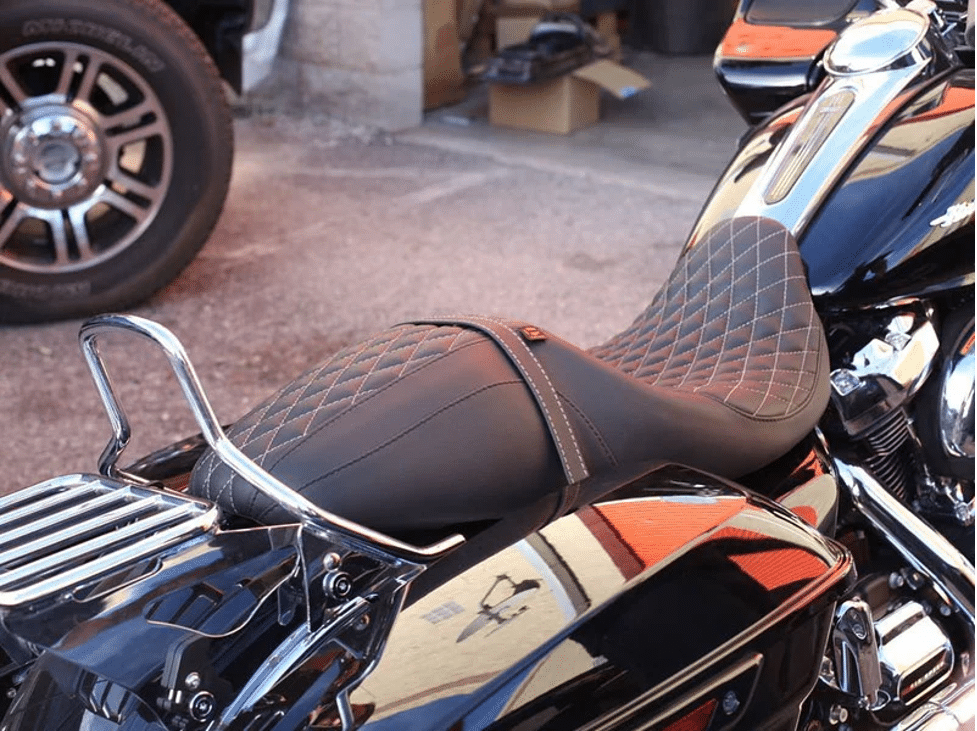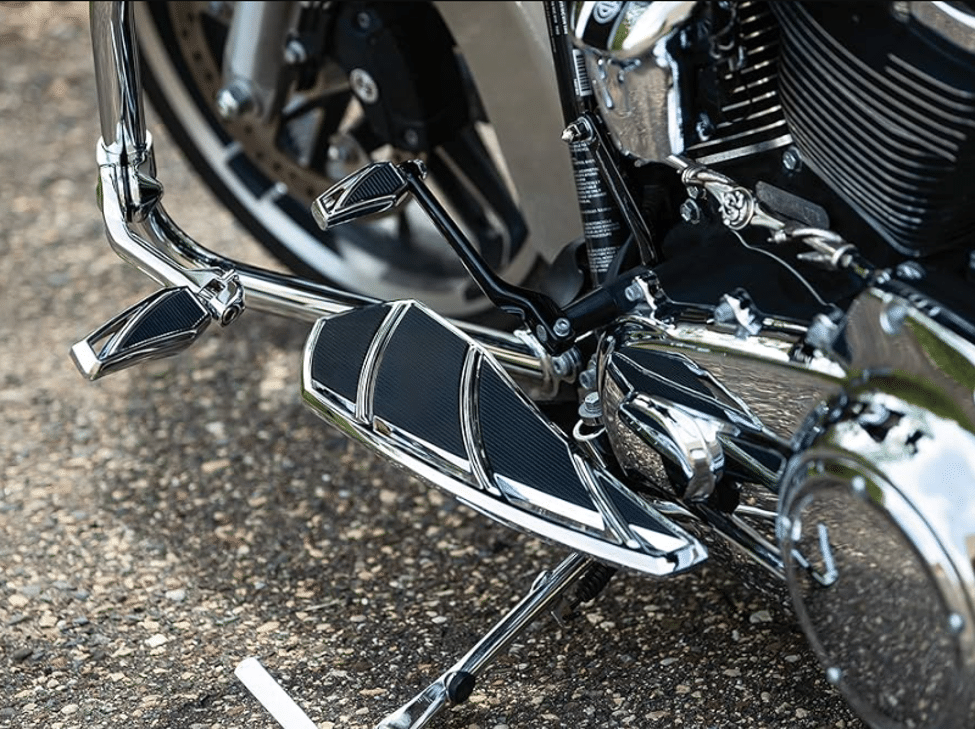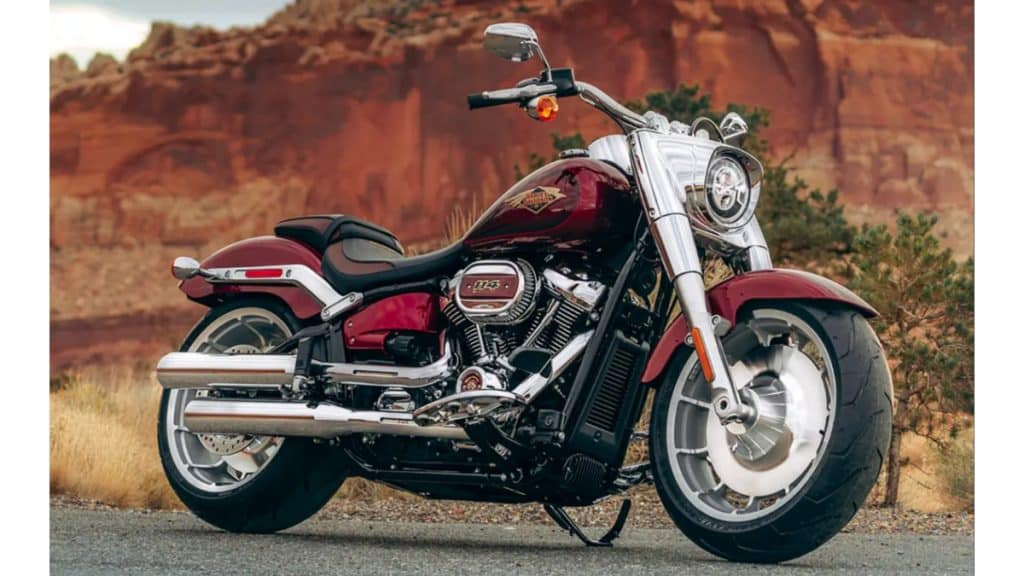Modifying big tourers and cruisers means different things to different riders. Harley Davidson dominates all other bike brands when it comes to aftermarket parts and accessories. Owners can add more power, customise the looks, go for more functionality and ultimately, change how the bike feels and rides.
Comfort plays a huge part in whether or not you like the bike. Forget horsepower or agility, if you’re dealing with fatigue and numbness after a short ride, chances are you won’t be getting on the same bike any time soon.
That’s why additions like aftermarket Harley Davidson seats with better padding and adjustability for riders of different statures, height-adjustable windshields and details like heated grips or roomier footrests feature on any rider’s to-buy list. Once you get into the riding position that feels comfy for hours on end do you start to consider how much more power there is from the V-twin or whether you want to change the styling.
Comfortable Seats

Comfort and riding enjoyment are two sides of the same coin. And here seats are the determining factor. They should be in the right height and width, get you in a suitable seating position along with bars and shifters, and work with the suspension in cushioning road imperfections. Seats also help with stability and control and reduce the effect of engine vibrations, particularly at low RPMs.
Stock Harley seats go for a versatile and low ride height to accommodate riders of all sizes. The Sundowner in solo or 2-up configurations offers decent padding and good back support, the Signature series goes with adjustable backrests and the touring-specific Hammock and Road Zeppelin use suspension or air bladders to isolate vibrations or ease pressure points.
All are good options on new bikes, and the try-before-you-buy concept keeps guesswork to a minimum. But if you’ve done a few thousand miles, had the bike for longer, and see wrinkling or cracks in the covers, time to consider other alternatives.
Why Go for Aftermarket Options?
Aftermarket seats offer better construction for improved rigidity and less flex, higher quality materials that withstand prolonged use, higher-density foam or proprietary padding, improved weatherproof covers and more prominent lumbar support. Pans are made of powder-coated stainless steel ensuring seats retain their shape (and don’t rust), include bumpers or carpeting to prevent direct contact with the paintwork, and also improve impact resistance.
The main selling point though is the much better foam. This is denser, holds shape for longer, and can include gel foam for even more comfort. Interestingly enough, aftermarket seats are harder than the factory Harley options, but won’t sag or deform after only a few miles. And a sagging seat with thin foam causes numbness and discomfort.
Aftermarket seat makers also include higher-grade vinyl or leather that withstands rider weight, constant friction, and direct exposure to sunlight and rain longer than any stock Harley Davidson seats. Vinyl keeps its looks for longer, but for a touch of vintage, go with the gradual wear in genuine leather. Looks also play a part in your choice. Stitching, details, colour schemes, backrest inserts and adjustable heights add a personal touch that also ups the look of the bike.
Wide Range of Styles and Seat Accessories
Factory Harley seats are tailored to the dimensions and purpose of the different bikes. But all bikes can be customised, meaning you can swap out solo seats for full-length 2-up versions when carrying a passenger, or change a full one-piece seat for a two-piece variant if you often ride solo, but also want to take a friend for a ride. Extended solo seats add more space and back support, while spring-mounted types get generous with more road and vibration isolation.
Also, look into the variety of accessories and features. Heating is a sensible choice for year-round riding, backrest pads with contoured sides add more stability, seat locks keep your investment protected, and sissy bars enhance passenger comfort.
Quality Floorboards

Floorboards enhance comfort by providing ample space for your feet. The parts are made with metal bases and non-slip rubber uppers, come in various shapes and sizes, and add a visual element to your bike. They also help with stability, letting you shift weight as needed, and easier engagement of the clutch or brake pedal. Most are hinged and can be positioned at almost any angle to prevent scraping in tight corners. A roomier and comfier option than standard pegs, or cumbersome highway bars.
Heated Grips
If you ride longer into the colder months, heated grips are comfort extras you can’t do without. They reduce numbness, promote proper circulation and of course keep you warm regardless of how cold or windy it is. And this directly impacts control and safety, with riders able to make needed adjustments quicker. Unique designs also include air cushioning to null handlebar vibrations, while the mix of serrated metal and rubber prevents slippage.
Wind Protection

Windshields protect riders from the elements, shifting oncoming air, and rain out of your way. They completely prevent or significantly reduce the likelihood of buffeting, especially at highway speeds and on longer rides. As such they’re a comfort addition to consider for cruisers and an aftermarket option if the stock touring unit doesn’t suit or you want to change the styling. Besides comfort, a high-quality windshield also helps with safety, preventing insects, stones and road debris from direct hits. This can be more than just a minor distraction and can cause accidents.
When choosing an aftermarket windshield, consider mounting types, screen materials, and size. Windshields come in two basic types in terms of mounting – either they’re attached to the forks or handlebars. Fork-mounted types are often permanent fixtures, usually not adjustable for angle, but come in bigger sizes and are considered more stable. Handlebar windshields are more suited to cruisers since they’re smaller, offer some degree of adjustability, but can vibrate at higher speeds.
Next, choose between detachable and fixed types. Detachable screens add versatility and come with a quick release to get the windshield on or off easily, depending on what you want. Another consideration is screen materials. Acrylic or Lucite is the cheapest and most common option, remains clear without yellowing, but can pick up scratches more easily. Polycarbonate windshields add strength and longevity with higher chip and scratch resistance but will discolour in prolonged exposure to UV rays.
For style, choose between clear or smoked screens, and consider vented types for improved aerodynamics. Lastly, height and width should roughly equal the height of your arms in an upright riding position for the best wind protection. This also allows you to see over the shields if needed. Bigger and wider types naturally offer better coverage, but may look out of place on smaller or older bikes.
